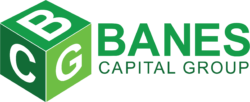Far and a Ways
It’s a revival of Fedspeak! In the Greenspan days of the Fed, that former Chair could craft words in such a fashion that it was nearly impossible to discern what he was really saying. We called it Fedspeak. Unlike ‘transitory’ – which is a description of what could turn out to be more permanent or ‘extended temporary’, Fedspeak answered questions in such a way that you thought you knew what the Fed was saying, but the verbiage could be interpreted in many various ways. Speaking to when the Fed would begin to raise rates, in the Bond Market Review (06/24/21), we wrote about what New York FRB President John Williams had explained in his thinking about the process. He said: “From my perspective, we are quite ‘a ways’ off from achieving my interpretation of ‘substantial further progress.’”
Quick Links
We knew then we were seeing a new very–usable but intentionally–evasive buzzword. In ‘a ways off’, ‘Fedspeak’ was back. In recent years, the Fed has been far more transparent – though their tenets on inflation are becoming stale and out of touch. Just as the Fed doubled down on the notion that inflation is transitory, they’ve now adopted the ‘ways off’ measure for time. Who uses such terms when seeking accuracy? ‘A ways off’ sounds more like the wagon master telling Lt. Dunbar how much further it is to his wilderness post (‘Dances with Wolves’). The term ‘a ways off’ describes time but doesn’t define it – and it describes a journey with no measure of distance. It’s a perfect new Fed phrase! Once the Fed adopts a non–committal phrase, they usually hold on to it for a while – even if it is only ‘transitory.’ Coming into next Wednesday’s FOMC meeting, the new term should be taking hold for their stance on rate hikes and tapering.
Fed Chair Jerome Powell testified before Congress last week and was questioned about inflation and policy. He said it wasn’t time to raise interest rates due to the economy being short of maximum employment. He used the occasion to join the narrative, saying: “While reaching the standard of ‘substantial further progress’ is still ‘a ways off’, participants expect that progress will continue.” In acting on inflation, Powell said nothing would prevent the FOMC from doing “the right thing at the right time.” That, and ‘a ways off’ are 2 ways of speaking to timing without specificity. Speaking to the multi–decade surge in inflation statistics, he said he didn’t expect that trend to sustain “for a very long time.” However, he agreed numbers showed: “A big uptick. Bigger than many expected. Bigger certainly than I expected.” He also agreed inflation was “not moderately above 2% by any stretch” and admitted it was “well above 2%” and that the Fed was “not comfortable with that.” He said if it persists, they would have to “re–evaluate the risks.”
The White House joined the Fed’s narrative but backed away from transitory to adopt a temporary stance on inflation. In the ‘real world’, those running companies are being forced to deal with pricing. Last week, Pepsi’s CFO said: “I’m not going to assume it’s going to be transitory. It’s going to be with us through the better part of next year.” While hikes and even some tapering could be ‘a ways’ off, the next FOMC meeting is at hand. We don’t foresee anything overly impactive coming from next week’s FOMC policy statement on Wednesday, but fully expect usage of any plans for rate hikes to be ‘a ways’ off. Recent statements by members imply the Fed is ready to ‘talk about’ talking about tapering. Sounds like a Bonnie Raitt song is cued up!
The Fed’s Beige Book provided a backdrop for their upcoming meeting. Tourism was rebounding but supply–side disruptions were still prevalent. It said the economy strengthened from late May to early July “displaying moderate to robust growth.” While some did, a majority of their contacts viewed price increases as not so transitory! Respondents noted record shortages of labor and supplies, strained car inventories, and rising construction costs.
Looking Ahead
- Equity cycles show a tradable low in the July 23rd–28th
- Bond yields should trade higher into a trend–change near July
- The FOMC will announce their latest interest–rate strategy on Wednesday, July 28th at 2 m. ET.
Gone but not forgotten
Though it’s hard to make a case otherwise, the National Bureau of Economic Research declared that the 2020 recession ended in April 2020 having lasted only 2 months. That downturn followed an expansion of 10.5 years – which was the longest on records that predate the Civil War. Though a textbook recession is usually 2 or more quarters of negative economic growth, this was the shortest in history. 22 million jobs vanished. Even though improving since mid–2020, we are far from recovering. Though the recession ended, nearly 14 million Americans are still receiving government benefits. It may not be textbook, but it had to be recognized in some fashion. Glad to know it’s over(?)!
Treasuries, Agencies, and MBS
The 10–year note Treasury yield fell to 1.18% on Monday, down 59 bps from the March highs and to mid–February levels – but after today’s 1.29% close still towering above Germany’s –.39%, Japan’s .01%, and the U.K.’s .56%. We’ve often said these foreign quality alternatives will continue to serve as a tether to keep U.S. rates from running away from the pack – despite the Fed’s $8.2 trillion balance sheet from massive QE, and the national debt running rapidly above the $28.5 trillion level. Even the very–challenged sovereign debt of countries that had to be rescued during the financial crisis are well below U.S. rates due to the QE asset purchases of the European Central Bank. Portugal’s 10–year is .25%; Italy’s is .71%; Greece’s is .67%: and Spain’s 10–year is .28%. These were referred to as the P.I.G.S. back then – but U.S. debt is now trading much higher in terms of yield. We think the Fed and global central banks are now ‘boxed in’ and unable to raise rates appreciably – even if inflation does worsen to the upside. In the last BMR (07/08), we said: “1.21% would fill a technical gap and 1.18% is our most aggressive target at this time.” That is now behind us. We also had another yield low due near July 21st, so timing was satisfied.
Last week, yields were 1 bps higher at 2–years but were lower by 1, 7, and 7 bps at 5, 10, and 30–years. After a hard drop this week, 2 and 5–year yields were only lower by 1.5 and 4 bps today, while the 10–year came back to neutral and 30–year yields were 2 bps higher. Earlier this week, 10 and 30–year yields traded to the lowest levels since late– January while the 5–year closed a February gap at .63%. The yield curve is also the flattest it’s been in 5 months. 30–year mortgage rates also fell to the lowest levels since February with a drop from 2.90% to 2.88% – 30 bps off their April highs. In May, China’s Treasury holdings fell for a 3rd month. Japan’s holdings remained ahead of China, though they dropped by $17.7 billion to $1.078 trillion. All in, foreign holdings of longer–term U.S. debt fell by $30.2 billion. However, a net $105.3 billion was channeled into U.S. assets. With a deficit of $174.2 billion in June, the Treasury’s budget deficit grew to $2.238 trillion 9 months into fiscal 2021. However, fiscal 2021 is now trailing the 2020 pace by 18.45% – largely because the June 2020 deficit had been a massive $864 billion.
Last week’s Treasury auctions were rated poorly. On Monday (07/12), $58 billion 3–year notes were sold at .426% – which was the highest level since February of 2020! Demand fell versus last month and to recent auctions. The buying group that includes foreign central banks accounted for 53.2% of the offering versus 54.2% last month. Also on Monday, $38 billion 10–year notes came at 1.371% – the lowest since this past February. Demand fell versus June and foreign buying dropped from 65.0% to 63.5% for this reopening of the May 2031 maturity. Dealer takedown was the lowest since 2017. On Tuesday (07/13), $24 billion 30–year bonds brought 2.00%. The demand and yield were the lowest since February. Foreign buying fell from 64.0% in June to 61.1% for this reopening of the May 2051 issue. Today’s $24 billion 20–year bond offering brought 1.89% in another ‘ugly’ auction. Demand fell versus June and foreign buying fell from 62.1% down to 60.2%. The May 2041 maturity was also reopened for this supply. Next week’s auctions include $60 billion 2–year notes on Monday (07/26), $61 billion 5–year notes on Tuesday (07/27), and $62 billion 7–year notes on Thursday (07/29) – clearing the way for Wednesday’s FOMC statement.
Economics
Retail Sales for June beat expectations of a .30% downturn with a .60% gain. However, May sales were revised from a 1.30% decline to a greater 1.70% drop. Ex autos, sales rose 1.30%. Initial Jobless Claims were revised 13K higher for the previous week, but then fell to a new pandemic low of 360K for last week. Continuing Claims fell 126K, also to a new pandemic low of 3.241 million. Some extra–assistance benefit plans have now run out in some states leading to the total Americans on some sort of government benefits falling below 14 million (from 14.208 to 13.836 million). Total Industrial Production rose by .40% in June – though factory output declined by .10%, driven by drops in automobile parts production. Capacity Utilization rose by .30% to 75.40%. Though the Philadelphia Fed Business Outlook dropped from 30.7 to 21.9, Empire (New York) Manufacturing surged from 17.4 to a record–pace of 43! In May, Wholesale Inventories rose 1.30% while Trade Sales were up by .80%. Business Inventories rose by .50%.
Consumer Comfort fell 1.1 points to 52.2 and has declined 4.7 points since its recent peak 3 weeks ago. The 3–week drop is the steepest since May 2020 and back to April (2021) levels. Personal Finances fell 1.8 points to the lowest outlook since March – and the steepest 3–week decline since April 2020. The Buying Climate remained near the lowest since March but did improve by .1 to 45.1. Confirming those outlooks, the University of Michigan Sentiment survey fell from 85.5 to a 5–month low of 80.8. Current Conditions fell from 88.6 to an 11–month low 84.5 and Expectations declined from 83.5 to a 5–month low 78.4. The expectations for inflation rose from 4.2% to 4.8% – the highest since August 2008. NFIB Small Business Optimism rose from 99.6 to 102.5 – the highest since November. More importantly, 47% were planning to raise prices. That’s the highest pace since 1981.
While we’ve all seen restaurants frequently printing new menus or updating their digital apps, imagine businesses like Sonic that have to replace/update those large glass menus at every order station! They no doubt wish inflation was only temporary.
The inflation data continues to surprise to the upside even though policy makers and the administration are sticking to the temporary–condition byline. Consumer Prices surged by .90% in June – with the largest jump since 2008. While the Michigan survey showed consumers expecting 4.8%, the year–over–year CPI result vaulted from 5.00% to 5.40%. We still think when price increases slow, they will plateau at higher levels. That blots out a temporary view of the condition. Core CPI (ex food & energy) also rose by .90% versus only .40% expected. That annual core CPI pace increased from 3.80% to 4.50%. Used automobile prices were a large factor for the upside. Temporary or not, Core CPI is increasing the most in nearly 40 years. Higher prices affect buying power – which is evident in ‘real’ (inflation–adjusted) earnings. Real Average Weekly Earnings fell 1.40% and Hourly Earnings dropped by 1.70%. Many think a downturn in auto prices will turn CPI lower, and it should. However, in comparing inflation data from the ‘70s, housing prices were included then and they are currently not – so we are probably outpacing the ‘70s!
Producer Prices saw their largest advance on records going back to 2010 with a 1.00% increase versus .60% forecasts. That shot the annual pace up from 6.60% to 7.30%. Core PPI doubled expectations with a 1.00% increase. The annual core PPI pace increased from 4.80% to 5.60%. Import Prices also rose by 1.00% but the annual pace slipped from 11.6% to a still very–high 11.2%. Export Prices were 1.20% higher. That annual pace dropped from 17.5% to 16.8%.
Homebuilder sentiment fell to a 11–month low in July as the NAHB Housing Market Index dropped from 81 to 80. A measure of homebuyer sentiment dropped of the charts to new lows. Housing Starts rose by 6.27% to a 3–month high of 1.643 million annual units. That was also up 34.67% versus last June when lockdowns were still prevalent. However, Building Permits fell 5.05% to an 8–month low of 1.598 million annual units. Home sales hit a barrier with a 1.2% drop – which marked the worst June retreat since records began in 2012. Median home prices had risen 25% on a year–over–year basis to $386,888. Austin, Texas saw a 43% annual hike!
Thursday is set for jobless claims data, June’s Leading Index, the Chicago Fed’s National Activity Index, and Existing Home Sales for June. Next Monday (07/26) gives us New Home Sales for June and Dallas Fed Manufacturing Activity. Tuesday follows with June orders for Durable and Capital Goods, the FHFA House Price Index for May, metro–home prices and other S&P Case–Shiller home price data, and the Conference Board’s Consumer Confidence surveys. Next Wednesday (07/28) reveals the FOMC interest–rate policy decision, the merchandise trade deficit (Advance Goods Trade Balance), and MBA Mortgage Applications (which rose a stout 16.0% but then fell 4% over the past 2 weeks). Thursday reveals Q2 GDP and Pending Home Sales.
Equities
Fear of owning stocks with the delta variant of the pandemic on the uprise led to a selloff on Monday. Fear of not being in stocks led to a panic rally on Tuesday. A 2–day loss of 1,245 points on the Dow Industrials was mostly reversed with a 220–point rally off the lows on Monday, a 550–point gain on Tuesday, and a 286–point gain today. This is a larger version of what has happened over the past months. 2 to 3–day plunges have been followed by rallies that erase those loses. Traders seem to think ‘this time’ is (or will be) no different – and have yet to be proven wrong so far in 2021. Our stock cycles still show a tradeable low between July 23rd and the 28th. That is, the more–positive energy begins near the 28th.
The Dow managed to etch out a double top above 35,000 before selling off, though it did set 2 record closes last week after having lagged other indexes. The S&P rose to new record highs from the 9th through the 14th (last Wednesday) – though its highest close was on Monday (July 12th). The Nasdaq also made its highest close on the 12th though it made a new high last Tuesday (the 13th). Banks and other indices like the Dow Transports were already in deeper corrections. The Japanese Nikkei and Hong Kong stocks were in much–deeper corrections (off 11.0% and 13.5% lower to their tops made earlier this year). Some other U.S. indexes are tracking near 3–month lows.
After large swings, stocks had rather–tame stats. The Dow lost 182.31 points or .52% last week to 34,687.85 but is .32% higher this week. The S&P fell .97% last week but is .73% better this week. The Nasdaq lost 1.87% but was 1.42% higher through today. The Dow Transports fell 2.36% last week but were 1.37% higher by today’s close. Bank stocks fell 2.43% but rebounded 1.32% into today’s close.
Other Markets
To date, Crude Oil’s high was the near–$77/barrel reached on July 6th. It has fallen 15.55% since that top on larger existing inventories and an OPEC deal to increase production. While Taco Bell and other companies can’t get supplies, Lumber is still seeing shortages but prices have fallen back to November levels – having dropped over 71% to their May 10th high. Natural Gas is the highest since mid–December 2018. Crude lost 3.69% last week and was 2.10% lower through today (after a much–larger 9.47% dip earlier in the week).
Gold has been struggling to hold $1,800/oz. and is well off its August high of $2,089/oz. Gold has a high–cycle due near August 6th. Gold rose .24% last week but was off .64% through today. Commodities gained .37% last week and are .19% better this week (after a big dive). The U.S. Dollar gained .62% last week and is .08% higher this week – rising to 3.5–month highs. The Japanese Yen gained .06% last week but fell .20% through today. The Euro fell .59% last week and then dropped another .10% this week. Corn lost 11.71% but rose 2.83% through today. Cotton gained 3.08% last week but fell 1.78% through today.
“I am not young enough to know everything.” Oscar Wilde
“He is indebted to his memory for his jests and to his imagination for his facts.” Richard Brinsley Sheridan
Doug Ingram, Financial Economist
Additional Information is Available on Request







